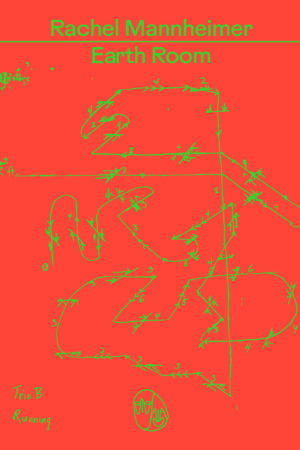Earth Room
by Rachel Mannheimer
reviewed by Celeste Chen
There’s a certain devastation to the idea that life is a solitary orbit, no matter how much one travels or loves or remembers. With exacting precision, Rachel Mannheimer parses this devastation in her book-length poem Earth Room, chosen by Louise Glück as the winner of the inaugural Bergman Prize.
Earth Room begins on the moon—or, rather, in a virtual reality installation designed to transport the speaker and her partner, Chris, to the moon via individual headsets. Though they sit side-by-side throughout the experience, the speaker thinks only of their distance: “Chris flying and swooping / so dramatically you could vomit, while I stayed down on the ground.”
What follows is an assemblage of the places through which the speaker drifts, revealing early on that Chris is sick and that he has never met her mother, who is dead. These two points anchor the poem as it dips, glides, and cycles through an itinerary of forty-seven locations, their names often repeating: Los Angeles, Providence, Tempelhof, the speaker’s car in Montana, Beacon, Berlin, Wuppertal, Tempelhof again, and back to Berlin. Sprawling across the Atlantic, Earth Room is part travelogue, part confessional, and each place becomes the site of an extended meditation on what it means to live in communion with others and with art.
One of Mannheimer’s accomplishments lies in the way in which she sustains Earth Room’s momentum across its expansive geography. Rather than becoming scattershot, the speaker’s meditation coheres as it moves across each site, uniting interior experience with memories embedded in the landscape.
At times the speaker joins the personal with the political: in Washington, DC, she references a failed 1940 bill that would have provided refuge for German Jews during the Holocaust. Later, while weeding her garden in Beacon, the speaker reflects on assimilation and immigration today:
A nation of immigrants! people always said—
a scrubbing of the slave trade, plus
I thought some liked the trick of it:
an immigrant who’s white.
Besides, it’s only after
rooting others out.[ … ] I didn’t want to die
but I felt shitty in my living.
In Earth Room, Mannheimer’s speaker treats life and death much the same way she does physical geography: she crisscrosses seemingly disparate locales, thereby exposing their interconnectedness, and affirms the loneliness of doing so. Just as physical sites are linked by memory and experience, so too are life and death. The speaker shares a landscape with Chris that holds as long as they both live, yet they are both haunted by her grief and the specter of Chris’s illness. At one point, as Chris dreams, the speaker observes: “He called out my name / and since I was—in waking life— / alive, I answered him.” And in Germantown, she recalls: “It was the year / we’d planned to marry, the year the fabric of the world / seemed ripped apart and so I hoped my dead mom might return.”
Equal parts sly and deft, Earth Room draws upon various exhibits, performances, and art installations as mirrors or extensions of the speaker’s relationships and travels. At a gallery in Berlin with Chris, the speaker casts her mind toward her mother, creating a startling portrait of loss:
At the Gemäldegalerie, there were so many ways
to be mom—so many babies one could have.
Botticelli’s sweet, walleyed Maria,
the infant vain and knowing on her lap.
And then these Flemish babies—
one a jointed, bleached-wood doll,
one a hairless cat.[ … ]
Chris, in his orange hat, wandered back
from the landscapes to find me.Why should I ever miss her less?
It’s only ever longer since I’ve seen her.
In New York, the speaker develops this idea of bidirectional exchange—viewer and object as dancers rather than performer and audience—by sandwiching a memory of an old BDSM-inflected affair with a discussion of the sculptor Robert Morris, who was dismissed by critics as “fundamentally theatrical.” When the man leaves, she notes:
After he moved to Seattle,
I couldn’t get any other man
to do it right.
No, not like you’re mad at me.
Looping and intimate, Earth Room depicts the act of living as a series of overlapping yet distinct performances and explores the dissonance between a person’s interior and exterior. Reading Earth Room is like riding shotgun on a road trip with a friend behind the wheel. No matter the stop or the destination, readers will find themselves on a singular, revelatory journey.
Published on May 10, 2022

